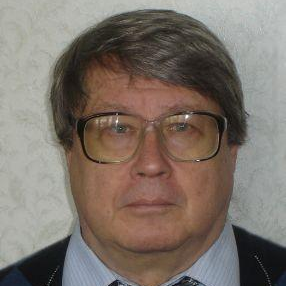Advance in Catalytic C−H Functionalization for Chemical Synthesis and Other Applications
A special issue of Catalysts (ISSN 2073-4344).
Deadline for manuscript submissions: closed (15 July 2020) | Viewed by 8478
Special Issue Editors
Interests: metal complex catalysis; biomimetic catalysis; photocatalysis; oxidation of hydrocarbons; catalytic activation and functionalization of C–H bonds in hydrocarbons; organometallic chemistry; regioselectivity
Special Issues, Collections and Topics in MDPI journals
Interests: noncovalent interactions - hydrogen, halogen, chalcogen, pnictogen, tetrel and triel bonds, pi-interactions, etc.; synthesis; catalysis
Special Issues, Collections and Topics in MDPI journals
Special Issue Information
Dear Colleagues,
Reactions of hydrocarbons and alcohols occurring with the functionalization of C-H bonds can be catalyzed by metal complexes. These transformations are widely applied for organic synthesis, water photo-oxidation, the fixation of CO, CO2 and N2, etc. The efficient and selective functionalization of C–H bonds in saturated and aromatic hydrocarbons is one of the very important goals of organic chemistry. Many reactions of various organic compounds occur via C–H bond functionalization, that is, replacing the hydrogen atom by any other group. All these processes lead to the formation of extremely valuable chemical products. New catalytic systems based on metal complexes have been discovered during the last decades, which allow us to introduce various groups into aromatic and even saturated hydrocarbons and their derivatives, as well as other C–H compounds (see, for example, A. E. Shilov, G. B. Shul’pin, “Activation and Catalytic Reactions of Saturated Hydrocarbons in the Presence of Metal Complexes”, Kluwer Academic Publishers, Dordrecht/Boston/London/Moscow 2002; G. B. Shul’pin, “New Trends in Oxidative Functionalization of Carbon–Hydrogen Bonds: A Review”, Catalysts 2016, 6(4), 50; F. Roudesly, J. Oble, G. Poli, “Metal-catalyzed CH activation/functionalization: The fundamentals”, J. Mol. Catal., A: Chem. 2017, 426, 275–296; D. S. Nesterov, O. V. Nesterova, A. J. L. Pombeiro, “Homo- and heterometallic polynuclear transition metal catalysts for alkane C-H bonds oxidative functionalization: Recent advances”, Coord. Chem. Rev. 2018, 355, 199–222; Alkane Funcionalization, Eds. A. J. L. Pombeiro, M. F. C. Guedes da Silva, J. Wiley & Sons Ltd. Hoboken/Chichester, 2019.) and oxidize alcohols into aldehydes, ketones and acids.
Full comprehensive and mini-reviews covering various fields of catalytic transformations and highlighting specific problems, describing new unusual catalysts, new unusual solvents, new methods of inducing reactions (by light irradiation, etc.), will be very helpful for the reader. The description of new methods applied to light alkanes, including methane. will be especially intriguing.
Prof. Dr. Georgiy B. Shul'pin
Dr. Kamran T. Mahmudov
Guest Editors
Manuscript Submission Information
Manuscripts should be submitted online at www.mdpi.com by registering and logging in to this website. Once you are registered, click here to go to the submission form. Manuscripts can be submitted until the deadline. All submissions that pass pre-check are peer-reviewed. Accepted papers will be published continuously in the journal (as soon as accepted) and will be listed together on the special issue website. Research articles, review articles as well as short communications are invited. For planned papers, a title and short abstract (about 100 words) can be sent to the Editorial Office for announcement on this website.
Submitted manuscripts should not have been published previously, nor be under consideration for publication elsewhere (except conference proceedings papers). All manuscripts are thoroughly refereed through a single-blind peer-review process. A guide for authors and other relevant information for submission of manuscripts is available on the Instructions for Authors page. Catalysts is an international peer-reviewed open access monthly journal published by MDPI.
Please visit the Instructions for Authors page before submitting a manuscript. The Article Processing Charge (APC) for publication in this open access journal is 2700 CHF (Swiss Francs). Submitted papers should be well formatted and use good English. Authors may use MDPI's English editing service prior to publication or during author revisions.
Keywords
- saturated hydrocarbons
- aromatic hydrocarbons
- olefins
- alcohols, C‒H functionalization
- oxidation
- homogeneous catalysis
- supported complex catalysts
- peroxides
- hydrogen peroxide
- reaction mechanisms






